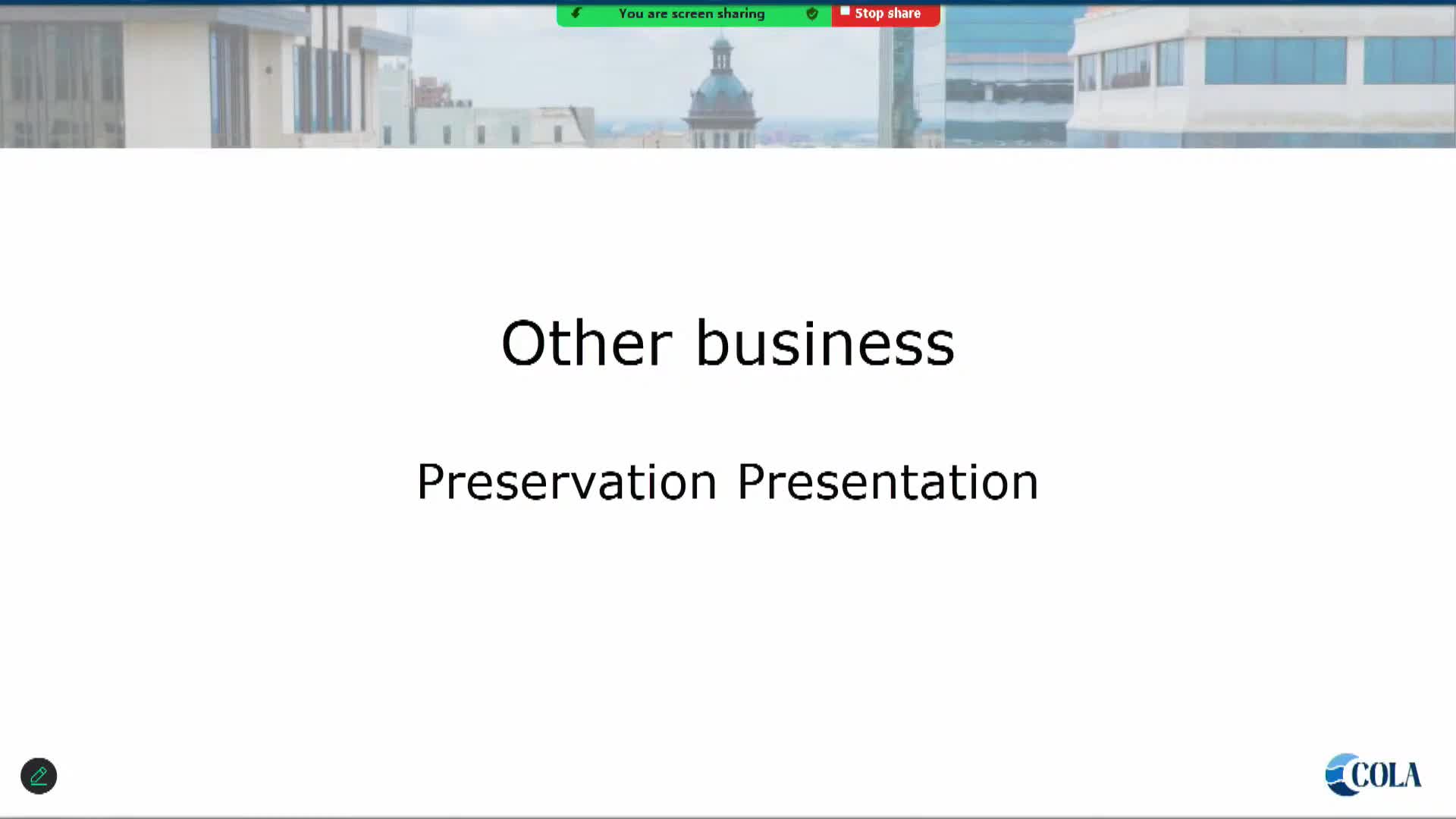DDRC staff presents energy-efficiency strategies for historic houses
October 17, 2025 | Columbia City, Richland County, South Carolina
This article was created by AI summarizing key points discussed. AI makes mistakes, so for full details and context, please refer to the video of the full meeting. Please report any errors so we can fix them. Report an error »

Betsy, a DDRC staff presenter, told commissioners that historic houses are often perceived as markedly less efficient than modern homes but that measured differences are smaller than many expect. "There was about a 6 to 8% difference in historic buildings versus contemporary buildings," Betsy said, summarizing results from a grant-funded study she worked on evaluating about 120 properties.
Betsy explained that the first step in improving efficiency is understanding the building envelope — where conditioned space ends and unconditioned space begins — and then addressing air leakage. She emphasized that windows are responsible for a minority of heat loss: "You see that there's about 12% that is lost through windows," she said, and noted that targeting floors, walls and ceilings typically yields a better return on investment than wholesale window replacement.
The presentation identified common leakage points in older homes: attic penetrations, uncapped plumbing and electrical runs, recessed lighting, gaps at changes in wall level, open wall cavities behind built-in cabinets, attic hatches and chimneys. Betsy described a blower-door test performed during a preservation outreach activity that found very little airflow around windows but measurable infiltration at plumbing penetrations and behind cabinetry.
Preservation-friendly and low-cost measures Betsy recommended included:
• Interior or exterior storm windows to add an insulating layer while preserving original sash;
• Weather-stripping, caulking and outlet/plug-seal inserts to reduce small but numerous air leaks;
• Chimney balloons and inflatable attic-hatch covers to cap large seasonal penetrations;
• Adding insulation where joists are visible in an attic and sealing penetrations before insulating;
• Regular HVAC maintenance and changing filters monthly; and
• Using a programmable thermostat, which Betsy said can change energy use by about "4 to 6%" per degree adjusted and recommended settings of 78°F in summer and 68°F in winter as energy-optimal targets.
Betsy also noted that electric utilities offer free walk-throughs and incentives: she said Dominion Energy will visit homes to identify efficiency opportunities and that utilities provide rebates for efficient lighting, HVAC equipment and other improvements.
When a commissioner asked whether the material would be posted for public use, staff said the presentation would be available on the DDRC YouTube page and that the commission’s website contains some energy-efficiency resources; staff indicated the commission could add additional guidance or update past newsletters.
Betsy cited the National Park Service preservation bulletins as a source of best-practice guidance, noting the agency has updated a preservation brief on energy efficiency to reflect more research for warm- and cooling-dominant climates.
The presentation closed after commissioner questions; no formal action was taken.
Betsy explained that the first step in improving efficiency is understanding the building envelope — where conditioned space ends and unconditioned space begins — and then addressing air leakage. She emphasized that windows are responsible for a minority of heat loss: "You see that there's about 12% that is lost through windows," she said, and noted that targeting floors, walls and ceilings typically yields a better return on investment than wholesale window replacement.
The presentation identified common leakage points in older homes: attic penetrations, uncapped plumbing and electrical runs, recessed lighting, gaps at changes in wall level, open wall cavities behind built-in cabinets, attic hatches and chimneys. Betsy described a blower-door test performed during a preservation outreach activity that found very little airflow around windows but measurable infiltration at plumbing penetrations and behind cabinetry.
Preservation-friendly and low-cost measures Betsy recommended included:
• Interior or exterior storm windows to add an insulating layer while preserving original sash;
• Weather-stripping, caulking and outlet/plug-seal inserts to reduce small but numerous air leaks;
• Chimney balloons and inflatable attic-hatch covers to cap large seasonal penetrations;
• Adding insulation where joists are visible in an attic and sealing penetrations before insulating;
• Regular HVAC maintenance and changing filters monthly; and
• Using a programmable thermostat, which Betsy said can change energy use by about "4 to 6%" per degree adjusted and recommended settings of 78°F in summer and 68°F in winter as energy-optimal targets.
Betsy also noted that electric utilities offer free walk-throughs and incentives: she said Dominion Energy will visit homes to identify efficiency opportunities and that utilities provide rebates for efficient lighting, HVAC equipment and other improvements.
When a commissioner asked whether the material would be posted for public use, staff said the presentation would be available on the DDRC YouTube page and that the commission’s website contains some energy-efficiency resources; staff indicated the commission could add additional guidance or update past newsletters.
Betsy cited the National Park Service preservation bulletins as a source of best-practice guidance, noting the agency has updated a preservation brief on energy efficiency to reflect more research for warm- and cooling-dominant climates.
The presentation closed after commissioner questions; no formal action was taken.
View full meeting
This article is based on a recent meeting—watch the full video and explore the complete transcript for deeper insights into the discussion.
View full meeting